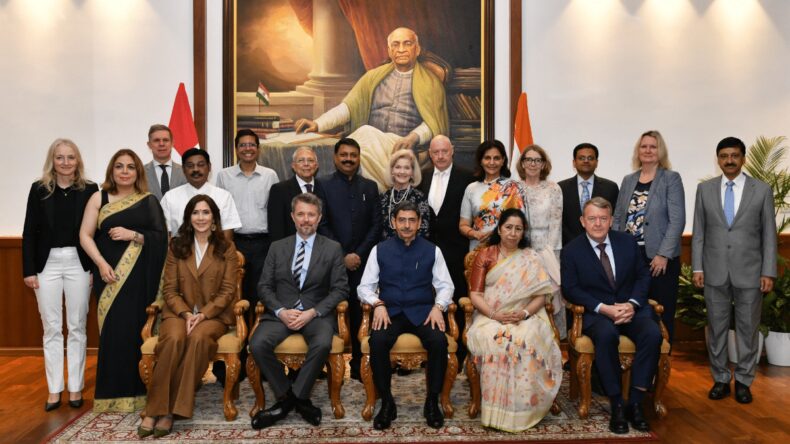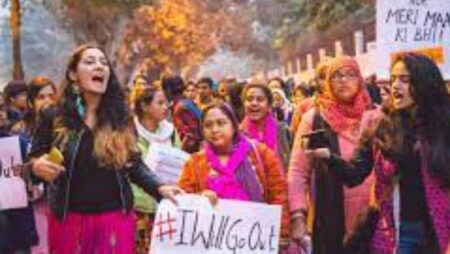The scientists of IIT Madras are collaborating with Denmark for research on low-carbon and more efficient energy sources.
Table of Contents
The Danish government launched a multi-layer strategic program to support the plan for green and sustainable development in India and to strengthen the trade links between the two nations in the water and energy sectors.
The Indian Institute of Technology, Madras (IIT-M) has joined forces with the academia and industry of Denmark for numerous research projects in the field of climate change mitigation and for enabling green transition.

Photo Credit: M. KARUNAKARAN
Image Source: The Hindu
On Wednesday, the Crown Prince of Denmark, Frederik Andre Henrik Christian, and Crown Princess Mary Elizabeth visited Chennai to move forward with the Green Strategic partnership with India.
Senior members of the bureaucracy and a high-level delegation of ministers were also accompanying them on the visit. The visit is a part of their official trip to India from February 26 to March 2.
The Energy Delegation attended a session on next-generation fuels and energy systems which was held in the IIT Madras Research Park.
Lars Aagaard, Minister for Climate, Energy, and Utilities, Govt. of Denmark stated that Denmark believes there is great potential in sharing mutual knowledge with India and its engineers to help implement the new technologies.

Image Source: IIT Madras
In January 2024, India presented a plan aiming to convert India into a hub for the production of global green energy.
Projects Announced
To help India with becoming carbon neutral, technological advancements, strategies, and the most recent information on water and energy were highlighted by the Danish team during the tour.

Image Source: The Week
A total of four projects were announced in the presence of the Crown Prince of Denmark, Lars Aagard, and the ambassador of Denmark to India, Freddy Svane.
Three projects are focused on energy and concentrate upon the vision of the IIT-M Energy Consortium to enable energy transition towards a low-carbon future.
Lars Aagaard stated that Denmark is working with Tamil Nadu to establish its first on-shore wind farm. 15 off-shore locations have been identified for the establishment of wind turbines.
He also added that since the 1980s, 40 GW of on-shore wind has been established by India, and there are plans for the establishment of 140 GW of wind energy by 2030. 30 GW of these would be off-shore and the rest would be on-shore.
S Krishnan, an Additional Chief Secretary in the Department of Industries, Investment Promotion and Commerce, Govt. of Tamil Nadu said that the state has been working on a green hydrogen policy.
In his speech, he said that the state of Tamil Nadu continues to lead in renewable energy as more than 50 percent of the installed capacity in the state is from renewable energy sources with the potential to expand into solar, wind, and green hydrogen.
He also added that the state government has signed a memorandum of understanding (MoU) for setting up green hydrogen facilities with two firms. Ten other entities have also shown interest in establishing these facilities.
In addition to that, he also stated that the state of Tamil Nadu has 20 GW of Renewable Energy Installed Capacity, of which 10 GW is in wind. There is also a potential of 13 GW of wind energy on-shore and 20 GW off-shore as the most promising locations off-shore in India are off the coast of Tamil Nadu- The Gulf of Munnar.
IIT Madras and Danish researchers are to collaborate on a project on the hydrogen economy. The second project is associated with decarbonization.
Hence, out of the four projects, three focus on the sector of energy. The projects will be jointly funded by the Department of Science and Technology, India (DST) and the Innovation Fund Denmark (IFD).
The fourth project is associated with water and was signed to encourage the education of engineering and scientific research between multinational corporations Danfoss, Denmark, and IIT, Madras. They exchanged two agreements for research on securing drinking water for coastal regions with the help of green fuels and renewable energy.
Why Denmark?
In terms of energy, Denmark has led the way for the world in the green transition. The country has a great deal to offer when it comes to renewable energy sources like green hydrogen, wind, and bioenergy, along with efficient and affordable energy efficiency at a green energy transition.













